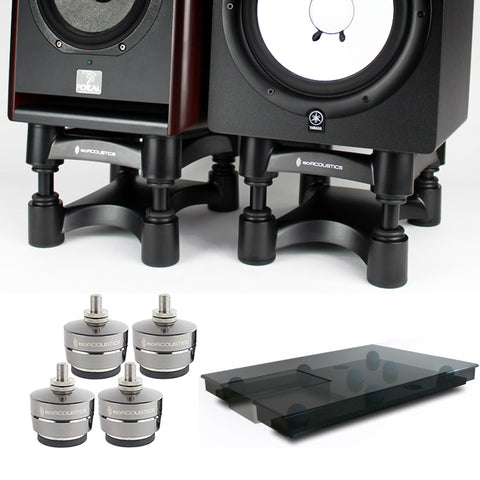
How to Improve your sound system cost effectively.
One of the hard working employees from Naim Audio has imparted some words of wisdom stating that if you improve your system 1% or 2% here and there eventually you have gained a 10% or more improvement. Every component you add to your signal path has an impact on the final sound. If you change something it will change the sound but the question you should ask yourself is: does this change make it better, worse, or indifferent? That got me searching for things to improve.
Correct set up, speaker positioning and calibration are still the first steps to getting the most out of your system. Once you have done everything possible to get the most out of your system (before spending money) then you should look at ways to improve the sound. Three areas your system can be affected are from electrical noise, structural vibrations and airborne vibrations within the room’s acoustics.
Electrical noise:
Power conditioners, filtration and surge protection
The problem with electrical noise is you don’t realise it’s there until you “clean up” your system. All of your products that are plugged into the wall power sockets at home have the potential to pick up unwanted noise from internal appliances in the home or other external sources from the neighbourhood. This noise affects your audio signal. Power boards and power conditioners offer a few solutions. Some boards offer surge protection only, which is a safety net that protects your audio gear against damage. The next level offers surge protection and filtration. Filtration is the part that filters the unwanted noise from the power and improves the sound. This is a great upgrade as you get an improvement from the sound and protection from surges, which every system should have.
Cables
Cables are no longer seen as an accessory but a component in their own right. This is an area you should talk to a professional about as you could spend a lot of money unnecessarily. Power cables, interconnects, speaker cables, analogue and digital cables can and do change the sound. I have done multiple tests on multiple types, brands and price points. I have seen a huge improvement from as little as $40 but knowing how far to take it is the key here. Good cables minimise noise and phase distortion while leaving the sound detailed, clear, dynamic, retaining spatial detail in the image, and reproducing the full frequency content.

Structural Vibrations:
Isolating Turntables
Vibrations can affect a variety of components from turntables to speakers. I see this area as a problem/solution category before sound enhancement. Turntables are one of the obvious products that benefit from improved isolation. If your turntable is on the same surface as your amplifier or speakers removing it from that surface will reduce vibrations. Further ways to minimise vibrations with turntables is to isolate it from the surface its on using different feet or isolation platforms.

Isolating Speakers
Most floor-standing speakers come with or have provisions for isolation feet to be fitted. The reason for this is they are trying to have less surface area touching the floor. Decoupling a vibrating speaker from the floor reduces resonances. This improves the image and removes a lot of the “boomy” sound. Bookshelf speakers that sit directly on a desk or bench top surface can benefit from isolation platforms too. Inexpensive isolating like the Les Davis 3D discs can be placed under turntables, amplifiers, power supplies, speakers and other components to manage micro-vibrations to great affect.

Airborne Vibrations:
Airborne vibrations can come from speaker moving air with such force that it’s making the turntable jump out of the grove or things in the room start vibrating. The first solution is to move things to reduce this. Once you have done all of the above then it’s time to explore acoustic treatment.
Acoustic Treatment
First it’s important to understand and differentiate isolating sound from getting in or out of a space as one thing, and controlling how sound moves in a space as another, which is what we are looking at now. Assuming everything has been set up in the optimal space we can look at ways to control the sound in that space to make it sound how you want it. What we can do in a space is-
- Control over powering bass bouncing around with bass traps and absorbers.
- Address first order reflections with absorption panels
- Add diffusers to break down the sounds energy
When people think of acoustic treatment they may think of ugly looking foam, which may not suit the style of the room. We understand that aesthetics of a room can be equally important so we have multiple options to add treatment with style in mind.

Leave a comment